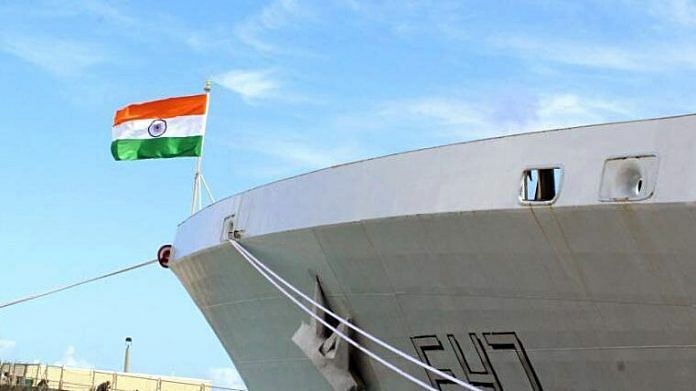
Thank you dear subscribers, we are overwhelmed with your response.
Your Turn is a unique section from ThePrint featuring points of view from its subscribers. If you are a subscriber, have a point of view, please send it to us. If not, do subscribe here: https://theprint.in/
“If Independence is granted to India, power will go to the hands of rascals, rogues, freebooters; all Indian leaders will be of low calibre and men of straw. They will have sweet tongues and silly hearts. They will fight amongst themselves for power and India will be lost in political squabbles.”
Winston Churchill was not the only one who seriously doubted independent India’s ability to survive on its own. After all India was inheriting the highest poverty and illiteracy rates with the weakest economy and social indicators of the world. On top of that, the biggest exodus of humans in history of civilisation with mass massacres higher than Hitler’s purge had marked the beginnings of its Independence. It had hostile neighbours, one of which gained heavily by cosying up to Camp USA as India’s founding fathers chose the path of Non-Alignment in the Cold War era. In this sense, from the broken beginnings of 1947 and humiliating defeat of 1962 to being the only power in Indo-Pacific who can today look China in the eye without blinking, India’s democratic rise has been no less than a miracle. And yet it mostly remains an eternally unfulfilled promise. A state that has never been fully there but has always been almost! That might just be about to change now.
In India’s western neighbourhood, geography has always been a bane for Afghanistan and a boon for Pakistan. While the former has been a battleground for proxy wars since medieval times, the latter has played its strategic location card to great advantage. Whether it be USSR in 1980s or Taliban post-9/11, the US knew it couldn’t even kill a camel in Af-Pak without the latter’s support. Thus Pakistan, solely on account of its shared borders, secured a steady gravy train of western goodies early on. And thanks to its single-minded focus of being one up than India, these geographic bones and banes always served as the ultimate distraction for India.
Thus, in-spite of having a strong maritime presence, India always had a fairly under developed Navy. India has only 16 submarines compared to China’s 74 and USA’s 66. The same numbers are 1, 2 and 11, respectively for aircraft carriers. Also, majority of India’s submarines are diesel powered, unlike USA and China whose are nuclear powered (SSBNs), which greatly reduces their submergence periodicity. In short, one of the longest coast lines of the world; territorial waters in one of the most strategically important parts of the globe have remained grossly under-utilised. Until now.
Today the world is transitioning towards a new normal. The unapologetic rise and recognition of Taliban is a stark indicator that Pakistan’s strategic relevance today is just a shadow of its past. It can no longer negotiate with a gun to its own head, because frankly no one cares. In future, at best, it will emerge as a guardian state for the Taliban under the sponsorship of Russia and China. The only interest of these two from Pakistan will be to ensure that terrorism does not spill into their own backyards. USA, UK and Australia have formed a new group called AUKUS to counter China’s nuclear-powered submarines’ strength. The QUAD group of India, Japan, Australia and USA is conducting more naval exercises than ever and had its first leaders of states meeting just a few days ago. Every major neighbour of China – whether in South China Sea, Yellow Sea or Taiwan Strait – is historically increasing its defence budget. In other words, the writing on the wall couldn’t be clearer – China is taking the crown from terrorism as the common global enemy and Pakistan will soon enough not have the same resources or patronage to poke India. And this makes it the perfect opportunity for India to break free from the constraints of its past and develop a stronger future.
India now must press the paddle on developing its marine strength to full capacity- for both economic and security reasons. Taking nothing away from its land borders (Pakistan will obviously try to use Taliban against India), it can now invest more of its budgetary, diplomatic, executive facilities on coastal boundaries. India needs to seriously execute Bharat Sagarmala Yojana for improving port logistics; sign on more collaborations like Project 75, Project 75i to build state of the art naval fleet; conduct more and more naval exercises especially in the Indo-Pacific region to secure its territories and score maximum development projects in South East Asia for flexing soft power.
They say time and tide waits for none. With everything said above coupled with political stability of Modi Government- the metaphorical stars could not have been better aligned for India. It has this one opportunity. Will it capture it? Or let it slip?
These pieces are being published as they have been received – they have not been edited/fact-checked by ThePrint.
Also read: SubscriberWrites: Are the custodians of open economy taking a U-turn on climate change policy?

COMMENTS